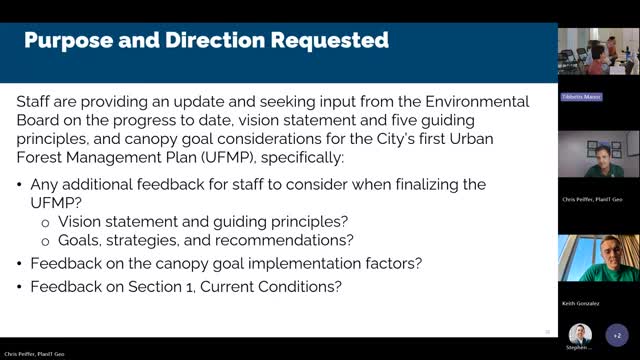Urgent call for tree planting to combat climate crisis
August 14, 2024 | Issaquah, King County, Washington

This article was created by AI summarizing key points discussed. AI makes mistakes, so for full details and context, please refer to the video of the full meeting. Please report any errors so we can fix them. Report an error »

In a recent government meeting, officials discussed critical aspects of urban forestry and environmental planning, focusing on tree canopy goals and wildfire preparedness. The dialogue highlighted the importance of integrating ecological considerations into development strategies, particularly regarding riparian areas, which are vital for biodiversity and habitat preservation.
Participants emphasized the need for clear definitions of \"priority areas\" within the urban tree canopy plan, advocating for a focus on regions that provide significant ecological benefits, such as wildlife habitats and water temperature regulation. Concerns were raised that current draft goals may overlook these critical areas, suggesting that future discussions should prioritize ecological value alongside urban development.
The conversation also touched on the challenges developers face regarding tree planting, with some expressing fears that planting trees could limit future land development and devalue their properties. Officials acknowledged the necessity of addressing these concerns to encourage tree planting among commercial landowners, proposing potential solutions to mitigate perceived risks.
Additionally, the meeting addressed the timeline for implementing the urban tree canopy plan, with officials indicating that while some funding is secured, more grants will be needed to meet ambitious planting goals. The plan aims to plant 16,000 trees, with a focus on strategic locations that maximize environmental benefits.
As the council prepares to present the plan this fall, discussions will continue on how to balance urban development with ecological sustainability, ensuring that the city meets its tree canopy goals while fostering a healthy environment for its residents.
Participants emphasized the need for clear definitions of \"priority areas\" within the urban tree canopy plan, advocating for a focus on regions that provide significant ecological benefits, such as wildlife habitats and water temperature regulation. Concerns were raised that current draft goals may overlook these critical areas, suggesting that future discussions should prioritize ecological value alongside urban development.
The conversation also touched on the challenges developers face regarding tree planting, with some expressing fears that planting trees could limit future land development and devalue their properties. Officials acknowledged the necessity of addressing these concerns to encourage tree planting among commercial landowners, proposing potential solutions to mitigate perceived risks.
Additionally, the meeting addressed the timeline for implementing the urban tree canopy plan, with officials indicating that while some funding is secured, more grants will be needed to meet ambitious planting goals. The plan aims to plant 16,000 trees, with a focus on strategic locations that maximize environmental benefits.
As the council prepares to present the plan this fall, discussions will continue on how to balance urban development with ecological sustainability, ensuring that the city meets its tree canopy goals while fostering a healthy environment for its residents.
View full meeting
This article is based on a recent meeting—watch the full video and explore the complete transcript for deeper insights into the discussion.
View full meeting
